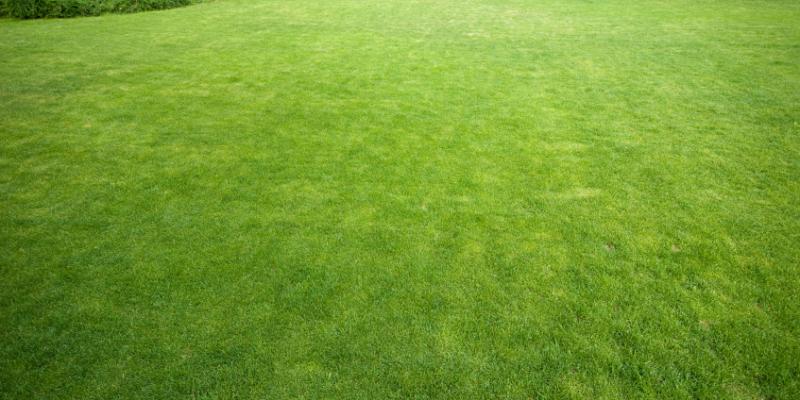Lawn Eating Florida Pests

Florida's warm and humid climate creates the perfect environment for a variety of lawn pests to thrive. Common lawn pests in Florida include chinch bugs, mole crickets, cutworms, and grubs, which can cause extensive damage to lawns if left untreated. Due to the favorable climate, these pests are attracted to the lush, green grass that is abundant in Florida, making it essential for homeowners to be proactive in identifying and treating these pests to maintain a healthy lawn.
Common Lawn Pests in Florida
Lush, green lawns are a staple of many Florida homes, but unfortunately, they can also attract a variety of pests. From damaging insects to invasive weeds, Florida homeowners often find themselves battling against these common lawn pests.
Chinch Bugs
Chinch bugs are small insects that can infest and damage lawns by sucking the sap out of grass plants, leading to wilting and yellowing of the grass. They are most active in sunny, dry, and hot conditions and can quickly multiply to cause extensive damage to a lawn if not controlled.
Chinch bugs can cause damage to lawns by sucking the sap out of grass plants, leading to yellowing, wilting, and eventually death of the grass. If left untreated, chinch bug infestations can lead to widespread damage and turf loss, requiring extensive restoration efforts to repair the lawn.
Grubs
White grubs are the larvae of various beetles, such as Japanese beetles, June beetles, or European chafers. These pests feed on the roots of grass, causing significant damage to lawns. They are white or cream-colored and have C-shaped bodies, typically found in the soil underneath the thatch layer of turfgrass.
When white grubs infest a lawn, they feed on the grassroots, causing the turf to wilt and turn brown. As the damage progresses, the affected areas may become spongy and easy to pull up. Additionally, the presence of animals like skunks, raccoons, and birds digging up the turf in search of grubs is a strong indication of an infestation.
To effectively get rid of white grubs in your lawn, start by removing any thatch buildup using a dethatching rake or machine. This will expose the grubs to natural predators and make them vulnerable to treatment. Additionally, regularly mowing the grass to the optimal height can help deter adult beetles from laying their eggs on the turf.
Cutworms
Cutworms are moth larvae with a soft, plump body and a variety of colors, including gray, brown, and green. They are nocturnal feeders and can often be found curled up in the soil during the day. Cutworms are known for their habit of cutting through the stems of young plants at ground level, causing severe damage to crops and gardens.
Cutworms thrive in moist, weedy areas with plenty of organic matter. They are commonly found in agricultural fields, gardens, and lawns, where they can feed on a variety of plants. They prefer to burrow into the soil during the day and emerge at night to feed on the stems of young plants.
To prevent cutworm infestations, it is important to keep the area free of weeds and debris, as well as employ physical barriers such as collars around plants. Biological control methods, such as introducing natural predators like parasitic wasps, can also help keep cutworm populations in check. Additionally, applying insecticides and natural repellents can effectively control cutworm infestations.
Signs of cutworm damage include plants that appear to have been cut off at ground level, wilted leaves, and holes in the soil where the larvae have burrowed. Active Seasons for Cutworms: Cutworm activity is most prevalent in the spring and early summer when young plants are most vulnerable to their feeding habits.
Fall Armyworms
Fall Armyworms are a type of caterpillar that can cause significant damage to lawns and vegetation. They have a distinctive appearance, with a light green or brown body and a dark head. Their feeding behavior is voracious, as they consume large amounts of plant material, leaving behind skeletonized leaves and defoliated plants. Fall Armyworms are most active during the fall and are known for their rapid movement and ability to quickly consume entire plants.
When Fall Armyworms infest an area, they can cause widespread damage to lawns and vegetation. They have the potential to destroy entire crops and can lead to significant economic losses for farmers. In addition to their impact on agricultural crops, Fall Armyworms can also damage residential lawns and garden plants. It is important to monitor for signs of infestation and take prompt action to control their spread.
Mole Crickets
Mole crickets, specifically the tawny, southern, and short-winged species, are a common problem for lawns in Florida. These pests can cause significant damage to the grass and roots, leading to unsightly and unhealthy lawns.
Mole crickets are nocturnal creatures that prefer to tunnel underground, which can lead to extensive damage to a lawn's roots and grass. They are most active during the warm, humid months, making them a pesky problem for Florida lawns.
To confirm an infestation, a liquid detergent and water mixture can be used to flush out mole crickets from their tunnels. Insecticide treatments are also effective, with the best times for application being in the early spring and early summer in Florida.
Call the Professionals
If you're tired of dealing with these or other lawn pests, it's time to take action. Reach out to Southern Greens, a Bradenton lawn care company, and say goodbye to those unwanted visitors. With our expertise and professional treatments, you can have a pest-free lawn all year round. Don't let creepy crawlies ruin your outdoor experience; contact our lawn care experts to eliminate and prevent lawn pests effectively and efficiently.
